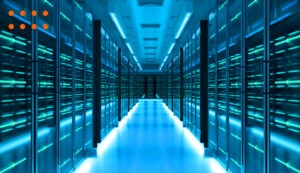In IT support, "help desk" and "service desk" are often used interchangeably. However, these two functions are distinct, and understanding the differences can significantly impact how effectively an organization manages its IT services. In this blog, we'll explore the main differences between a help desk and a service desk and why embracing a service desk is the way forward for modern businesses.
What is a help desk?
A help desk is traditionally the first point of contact for users facing IT issues. It focuses on providing quick fixes and support for immediate problems, such as password resets, software glitches, and hardware malfunctions. Help desks are reactive by nature, addressing issues as they arise. Their primary goal is to help ensure users can return to their tasks quickly with minimal disruption.
Key features of a help desk:
What is a service desk?
On the other hand, a service desk offers a more comprehensive approach to IT service management . It is designed to be a strategic partner within an organization, focusing not just on immediate fixes but also on improving IT processes overall. A service desk aligns with broader business objectives to enhance efficiency, productivity, and user satisfaction.
Key features of a Service Desk:
Main differences between a service desk and a help desk
Scope and Focus
Service Orientation
Functionality
Methodology
Service Desk is the future
As businesses evolve in the digital age, efficient and strategic IT service management becomes more critical. A service desk offers numerous advantages over a traditional help desk, positioning organizations to better meet the demands of modern IT environments.
1. Enhanced Efficiency and Productivity: A service desk's comprehensive approach to managing IT services helps streamline processes, reduce downtime, and improve overall efficiency. By addressing root causes and implementing proactive measures, a service desk minimizes recurring issues and optimizes IT operations.
2. Improved User Satisfaction: With a service desk, users benefit from a more holistic support system that resolves immediate issues and provides a better overall IT experience. Service level management helps ensure that users receive consistent and reliable support, enhancing their satisfaction and productivity.
3. Alignment with Business Goals: A service desk aligns IT services with the organization's broader objectives. This strategic approach helps ensures that IT supports and drives business growth rather than just reacting to problems. By focusing on continuous improvement and value delivery, a service desk contributes to the business's long-term success.
4. Future-Proof IT Management: As technology advances, organizations need a flexible and scalable IT service management solution. A service desk is well-equipped to adapt to changing technologies and business needs, helping ensure that IT services remain relevant and effective.
The strategic advantage of a service desk
The differences between a service desk and a help desk can significantly impact how effectively your organization manages IT services. While both help and service desks play crucial roles in IT support, the future belongs to the more comprehensive and strategic service desk. By embracing a service desk model, organizations can enhance efficiency, improve user satisfaction, align IT with business goals, and future-proof their IT management. As we move forward in the digital era, the service desk is the key to unlocking the full potential of IT services.
Introducing SolarWinds Service Desk
SolarWinds® Service Desk is designed to help organizations achieve these benefits and more. As a comprehensive IT service management (ITSM) solution, SolarWinds Service Desk goes beyond traditional help desk functions to offer a proactive, strategic approach to managing IT services. With features like incident management, change management, and service level management, SolarWinds Service Desk empowers your IT team to deliver exceptional service that supports your business goals.
Ready to upgrade your IT support with a service desk aligning with your business needs? Learn more about SolarWinds Service Desk and discover how it can transform your IT service management.







